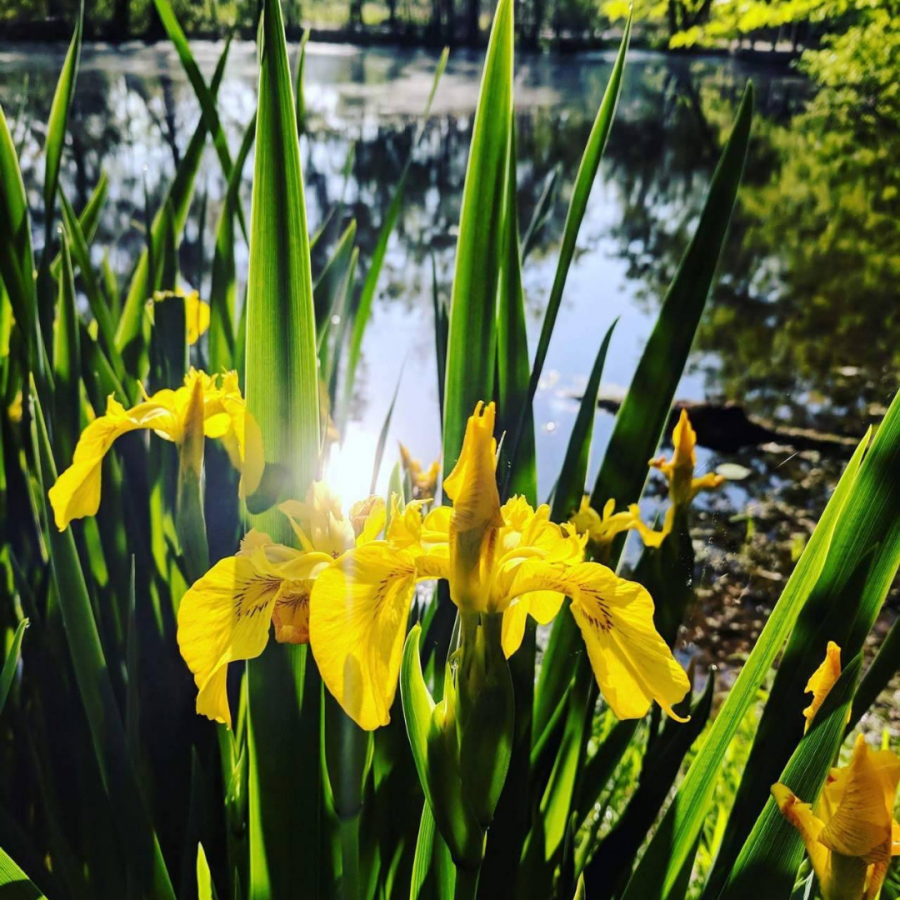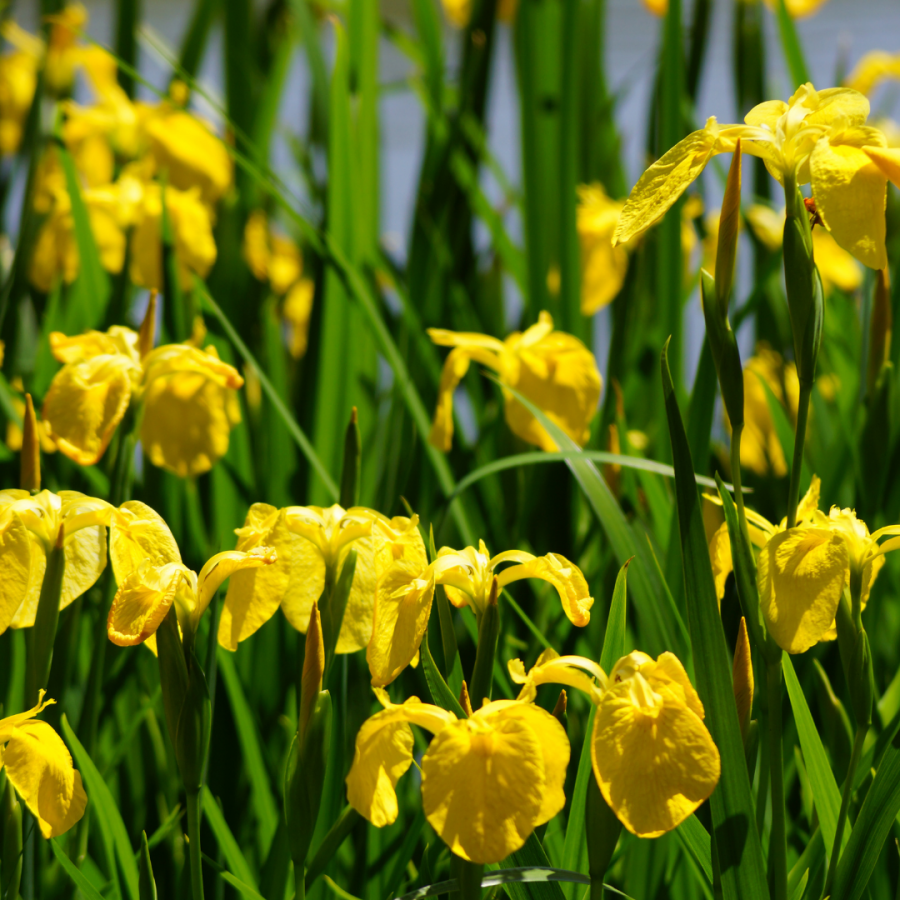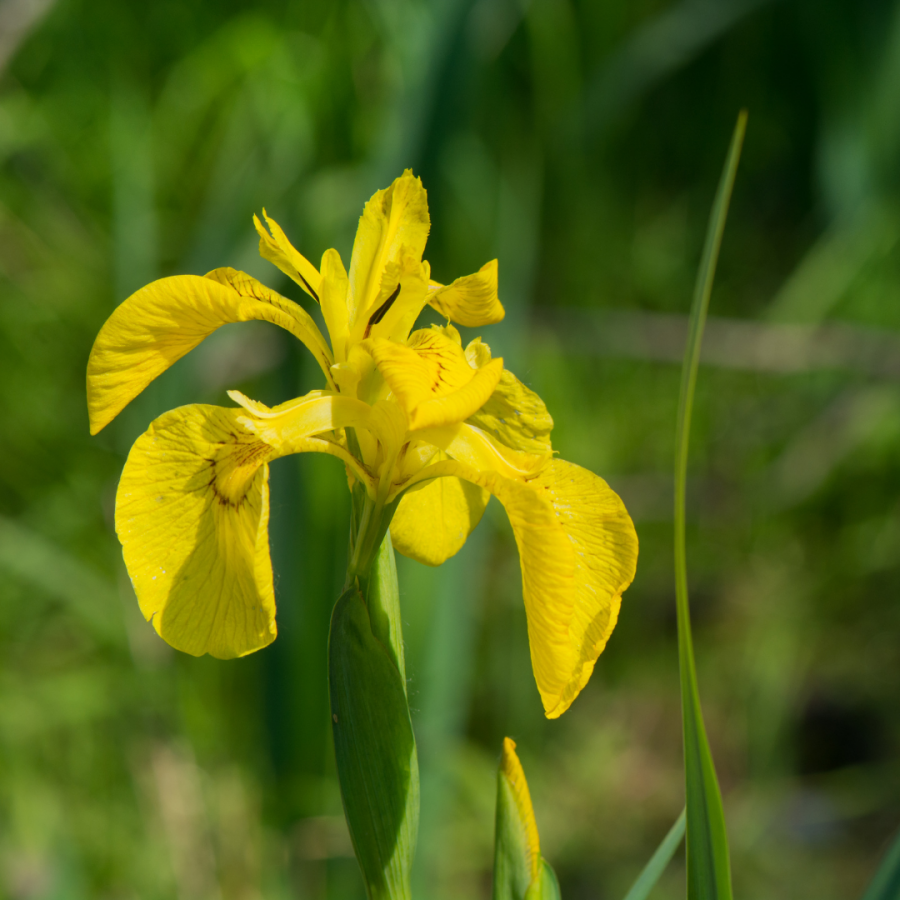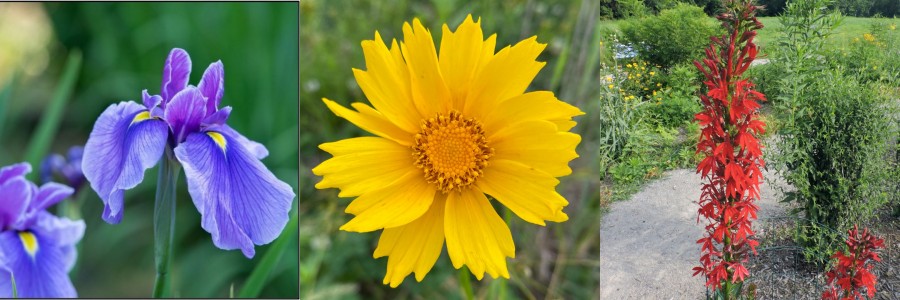Blog
A Sunny Garden Flower Gone Awry

by Danie Frevola, Conservation Apprentice
Yellow iris (Iris pseudacorus) is a stunning wetland plant with tall and showy yellow flowers (Fig 1.). While it is an attractive landscaping plant, it also peaks gardener’s interest because it can grow in a variety of habitats, from saturated soil to dry soil, and in a wide range of pH conditions. Because of its attractiveness and hardiness, yellow iris was thought to be a perfect landscaping plant. However, yellow iris is not native to the United States, so it was purposefully introduced from Europe and Asia. The species quickly gained attention and was planted in yards across the country. But soon after the species was introduced, it escaped landscaping and began establishing in the natural environment.
Once in the natural environment, yellow iris can grow nearly unchecked. All parts of the plant are toxic to wildlife, so it has no predators to slow its spread. Therefore, once it reaches maturity, yellow iris can quickly outcompete native plants. Yellow iris produces hundreds of seeds per year and each seed is capable of floating downstream and starting a new population miles away from the parent plant. Adding to its aggressive spread, yellow iris also reproduces asexually through rhizomes. A rhizome is a root structure that stores energy and produces new above ground growth (Fig. 2). Each new shoot grown from a rhizome is a clone of the original plant, but capable of producing hundreds of seeds independent of the original plant.

The rhizome not only gives yellow iris a reproductive advantage, but it also forms dense root systems that compact the soil—making it difficult for native seeds to germinate. Without other species able to germinate, yellow iris decreases its competition and continues to spread rapidly. As yellow iris spreads, it also forms thick above-ground growth. These dense stands of yellow iris block sunlight from other established species, allowing yellow iris to outcompete these species as well (Fig. 3).

Given yellow iris’s life history traits, it is easy to understand why the plant can thrive outside of landscaping. However, to protect our native biodiversity, it is important that we manage any planted and escaped yellow iris populations. However, this is easier said than done! Yellow iris produces a toxin that is severely irritating to human skin, making it difficult to remove by hand. Also, the rhizomes are difficult to dig up because of their dense structure and even the smallest unremoved rhizome fragment can continue to grow to produce new shoots. Therefore, the most efficient and safest way to remove yellow iris is to trim the above ground growth (using a weed cutter, brush cutter, or loppers) and to apply herbicide to the foliage that remains. However, this may have to be done more than once to deplete the rhizome’s stored energy.
Alternative plants to use in landscaping include:

- Northern Blue Flag Iris (Iris versicolor)
- Lanceleaf Coreopsis (Coreopsis lanceolata)
- Cardinal flower (Lobelia cardinalis)